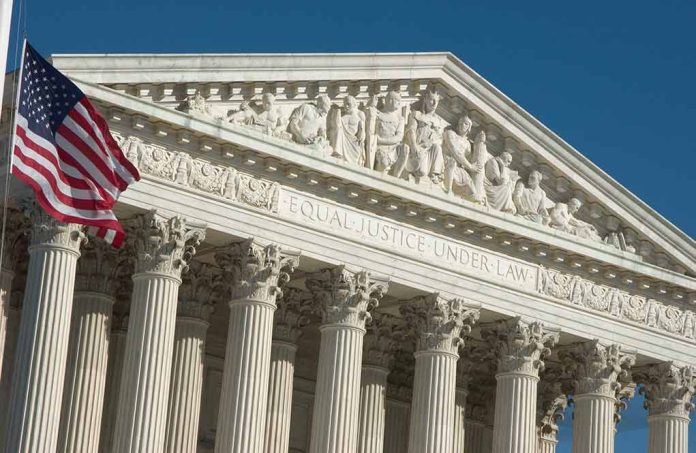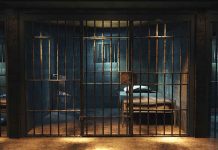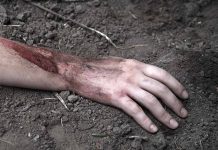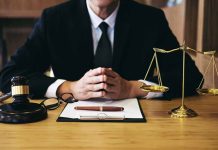
The Supreme Court declined to review John Nassif’s appeal, raising questions about free speech limitations in government buildings.
At a Glance
- Supreme Court rejected an appeal from John Nassif, convicted for his role in the Jan. 6 Capitol attack
- Nassif challenged the constitutionality of a law banning “parading, picketing, and demonstrating” inside the Capitol
- Lower courts upheld the conviction, stating the Capitol is not a public forum for protests
- The decision affects over 460 defendants charged with the same misdemeanor related to the Jan. 6 riot
- President Trump has promised to pardon some individuals convicted of Jan. 6-related crimes
Supreme Court’s Decision and Its Implications
The U.S. Supreme Court has declined to hear an appeal from John Nassif, a Florida man convicted for his involvement in the January 6, 2021 Capitol breach. Nassif, who was sentenced to seven months in prison for misdemeanors including disorderly conduct and violent entry, challenged the constitutionality of a law prohibiting “parading, picketing, and demonstrating” inside the Capitol, arguing that it infringes on First Amendment rights.
Lower courts, including the U.S. Court of Appeals for the D.C. Circuit, rejected Nassif’s arguments, maintaining that the Capitol is not a public forum for protests. The Supreme Court’s decision to not review the case leaves these lower court rulings intact, potentially affecting over 460 defendants charged with the same misdemeanor related to the January 6 events.
Legal Perspectives on Capitol Protests
The case has sparked debates about the nature of public spaces within government buildings. The D.C. Circuit classified the Capitol as a nonpublic forum, allowing for broader restrictions on speech and demonstrations. This classification contrasts with the D.C. Court of Appeals’ recognition of some areas as public forums, highlighting the complex legal landscape surrounding protest rights in government venues.
U.S. District Judge John Bates upheld the parading charge against Nassif, citing the necessity for restrictions to maintain order and security within the Capitol. This ruling underscores the balance courts are trying to strike between protecting free speech and ensuring the safety and functionality of government institutions.
Broader Context of January 6 Prosecutions
The Nassif case is part of a larger prosecutorial effort related to the January 6 events. Nearly 600 defendants have been charged with assaulting law enforcement, with ongoing arrests continuing. The most severe sentences have been handed down to leaders like Stewart Rhodes and Enrique Tarrio for seditious conspiracy and orchestrating the riot. “I am inclined to pardon many of them. I can’t say for every single one because a couple of them, probably they got out of control.” Trump stated.
Ongoing Legal Developments
The Supreme Court’s decision in the Nassif case comes amid other legal developments related to January 6. In a separate case, United States v. Fischer, the Supreme Court narrowed the scope of an obstruction statute used against defendants, potentially impacting other January 6-related prosecutions. Additionally, a federal judge recently vacated pretrial dates in Trump’s case following his election win, after a Supreme Court ruling on presidential immunity.
As the legal landscape continues to evolve, the Nassif case represents a significant moment in the ongoing debate over free speech rights, protest limitations, and the balance between public access and security in government buildings. The Supreme Court’s decision not to review the case leaves these complex issues unresolved at the highest judicial level, likely ensuring continued legal challenges and public discourse on the boundaries of protest rights in the wake of January 6.
Sources:
Supreme Court rejects appeal over Jan. 6 ‘parading’ charge
Supreme Court rejects appeal over Jan. 6 ‘parading’ charge














